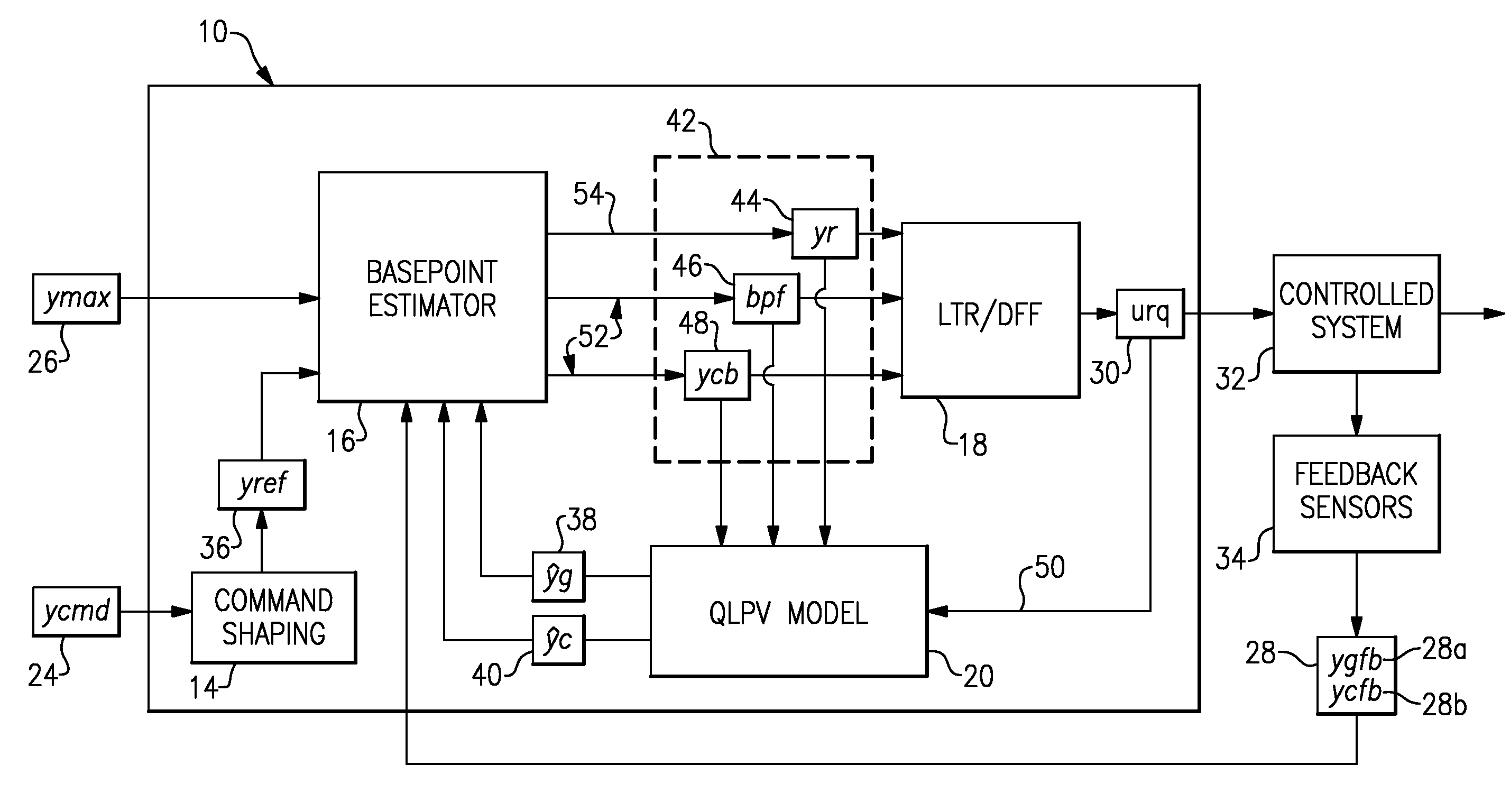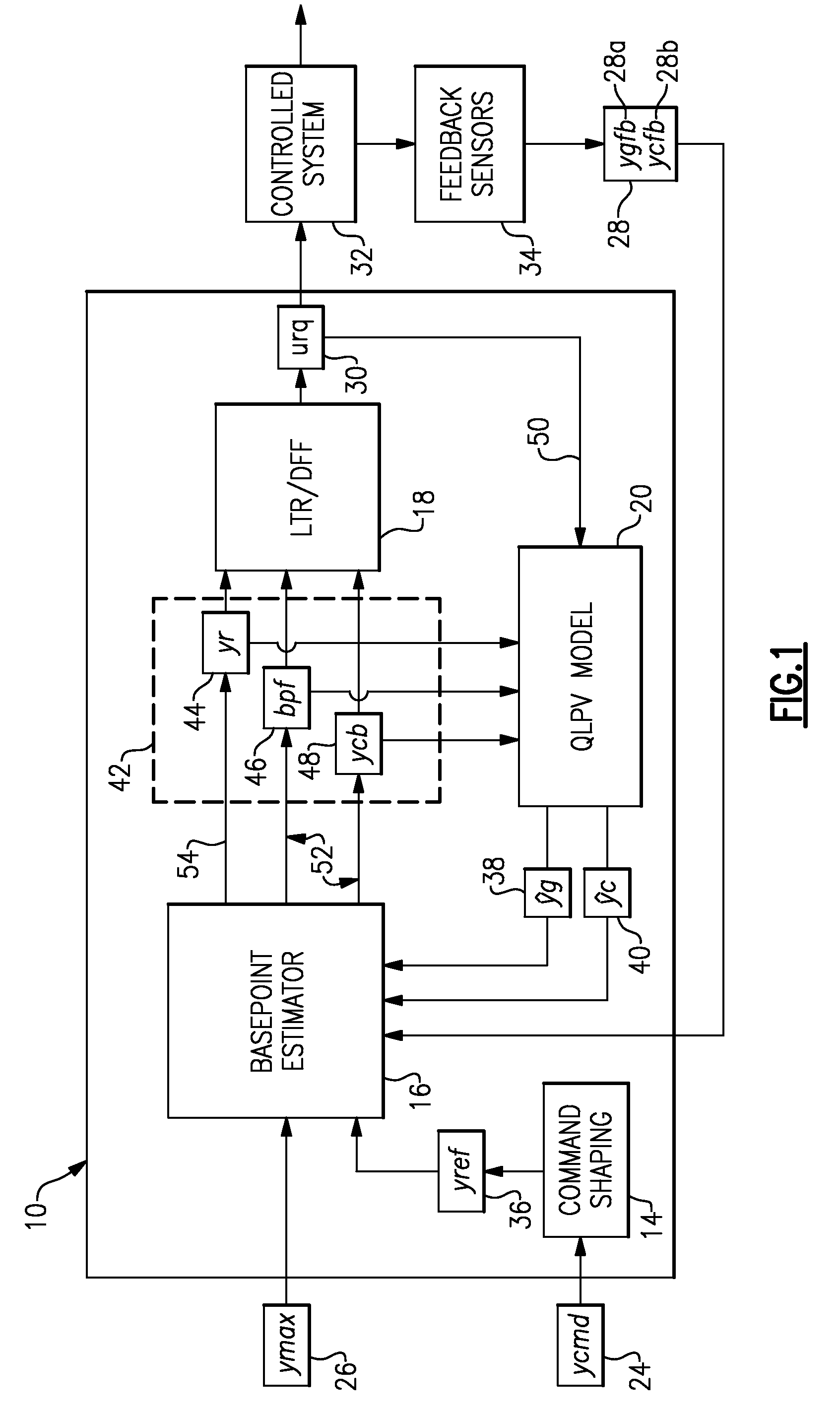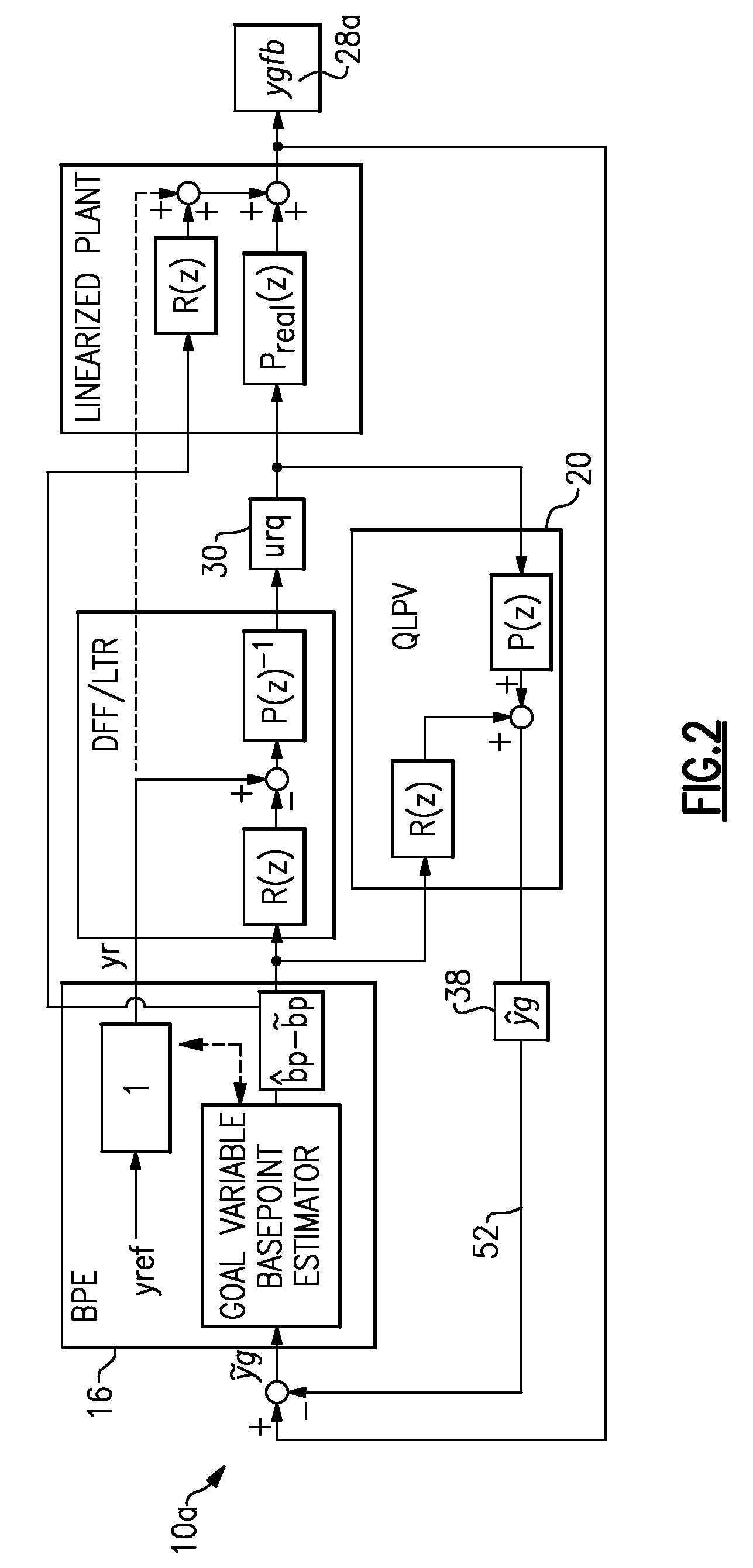Multivariable control system
a control system and multi-variable technology, applied in adaptive control, process and machine control, instruments, etc., can solve the problems of complex computational demands, inability to adequately control cross-coupled multi-variable systems with such models, and inability to accurately control cross-coupled multi-variable systems. application of such technology has been limited to chemical process applications, so as to reduce the difference
- Summary
- Abstract
- Description
- Claims
- Application Information
AI Technical Summary
Problems solved by technology
Method used
Image
Examples
Embodiment Construction
[0013]FIG. 1 schematically illustrates an example multivariable control system 10. The system 10 includes an optional command shaping module 14, a basepoint estimator 16, a loop transfer function recovery / dynamic feed forward (“LTR / DFF”) module 18, and a mathematical model 20. The mathematical model 20 is designed to predict behavior of a controlled system 32 and represents system dynamics of the controlled system 32. In the example of FIG. 1, the mathematical model 20 is a quasi-linear parameter varying (“QLPV”) model. However, it is understood that the mathematical model 20 would not have to be a QLPV model, and could be another type of model, such as a locally linearized model.
[0014]The system 10 is operable to receive a plurality of commands 24 (“ycmd”), a plurality of maximum or minimum values for limited variables, or “limits”26 (“ymax”), and feedback signals 28 (“ygfb” and “ycfb”) as inputs, and is operable to produce actuator requests 30 (“urq”) in response to those inputs. ...
PUM
 Login to View More
Login to View More Abstract
Description
Claims
Application Information
 Login to View More
Login to View More - R&D
- Intellectual Property
- Life Sciences
- Materials
- Tech Scout
- Unparalleled Data Quality
- Higher Quality Content
- 60% Fewer Hallucinations
Browse by: Latest US Patents, China's latest patents, Technical Efficacy Thesaurus, Application Domain, Technology Topic, Popular Technical Reports.
© 2025 PatSnap. All rights reserved.Legal|Privacy policy|Modern Slavery Act Transparency Statement|Sitemap|About US| Contact US: help@patsnap.com



